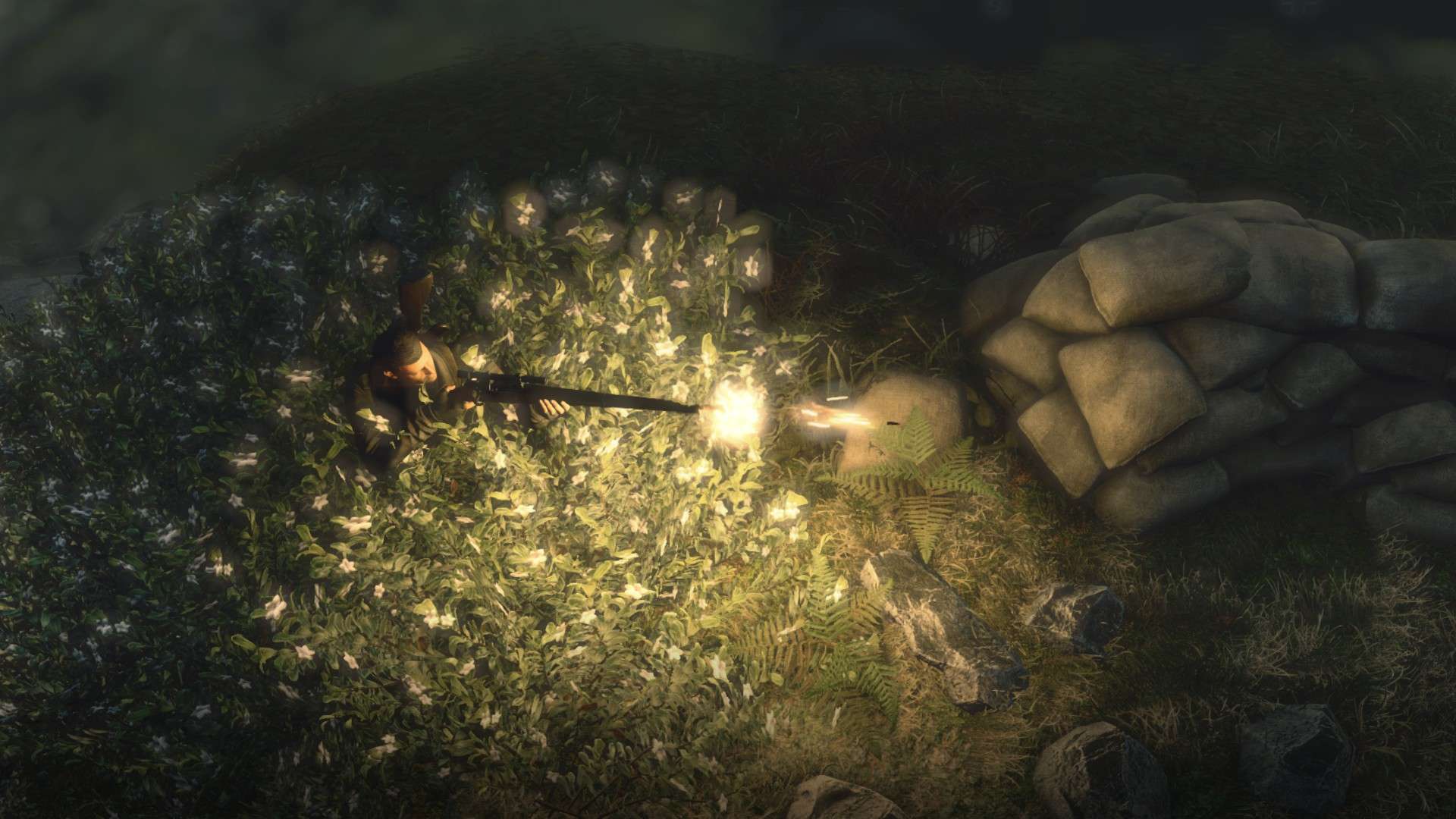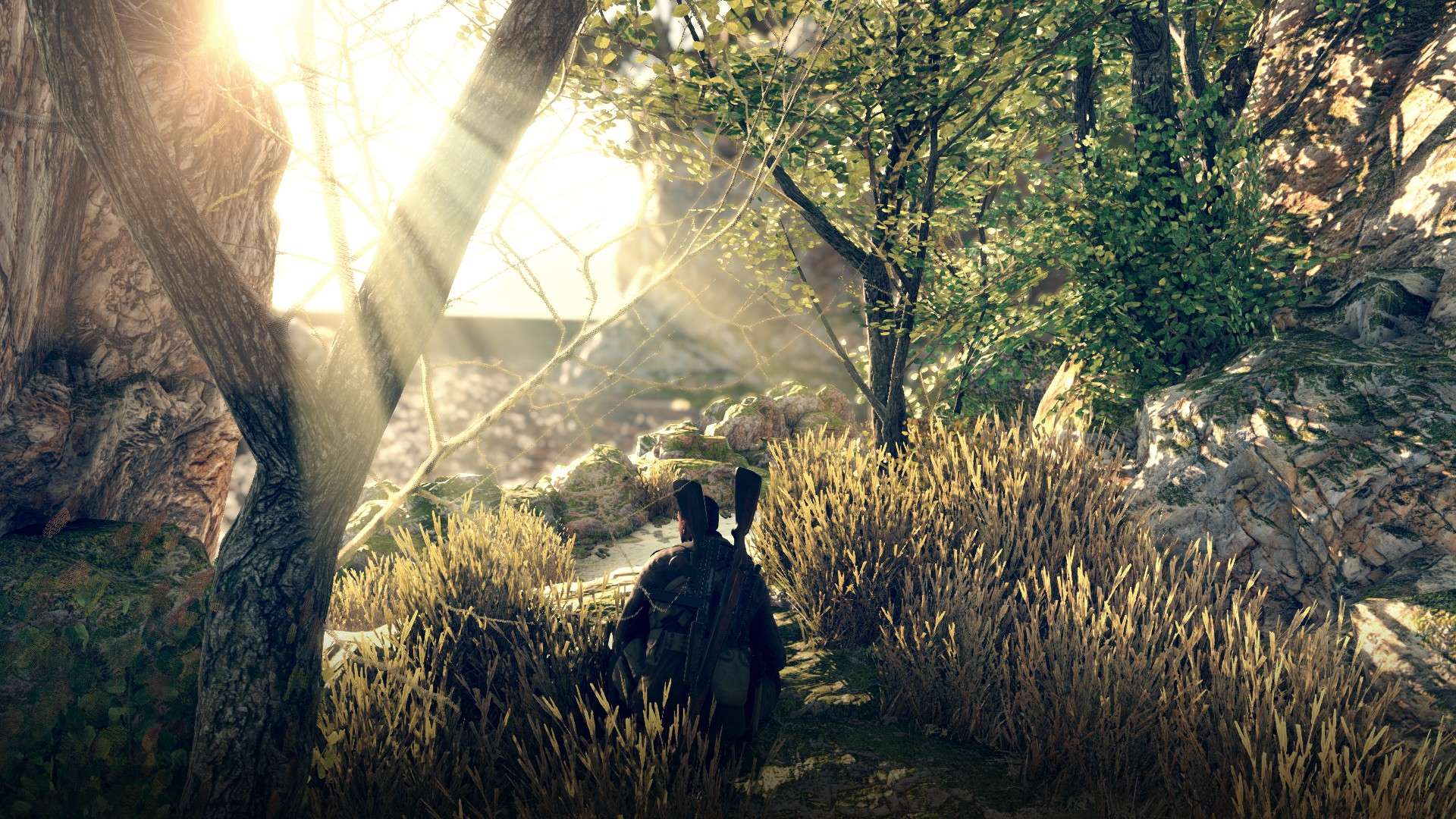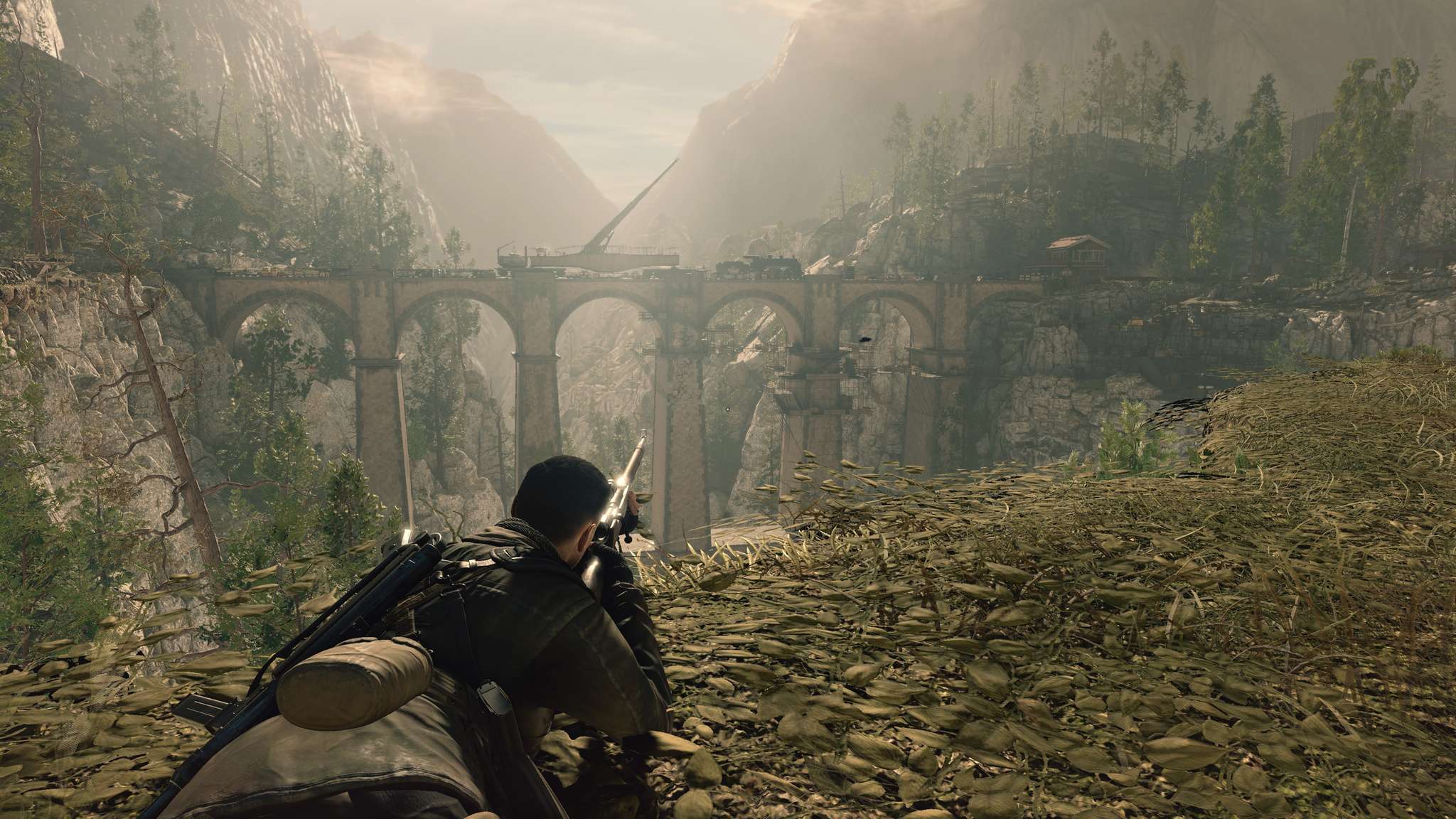
Sniper Elite 4 PC Review
Nazis and testicles, well exploding testicles, are two things very much tied to the Sniper Elite series. Ever since the x-ray mechanic was brought into Sniper Elite V2, players have been having fun popping nazi testicle after nazi testicle (link mandatory video to demonstrate description of painful removal of testicles), which the game provides with some rather faithful detail. The last title, Sniper Elite III, which came out on last generation and current generation consoles, embraced this fully by letting fans give Hitler the pop (even coming with just one ball). But I must halt the bollocks chatter, as the x-ray system shows many body parts becoming pierced with well placed shots. Sniper Elite III took the bar higher with gruesome kills, but even after the shock value wears off, what was left was a fun game with a few flaws, but one that offered the best experience in the limited market of dedicated sniper games. Rebellion are now back with the follow up, unsurprisingly titled Sniper Elite 4, which comes with all the stuff you liked about the previous game, but slicker and more feature packed.
Karl Fairburne moves from the unique setting of the North African conflict of World War II to the colourful location of Italy during 1943, setting up the story as a direct follow on from the events of the previous game. Karl’s trip to Italy requires his specific set of skills – the ability to silently take out all opposition that block his way to accomplishing the objected, which in Italy is to help the freedom fighters push back against the Nazi occupation, while Karl hopefully gets their help in stopping one of those super weapons that he’s become such an expert in destroying. It’s not a particular interesting plot until the last couple of missions come into play, with some twists that people might see coming, but the job is done to get the player interested in the setting and the target objectives that fill the game’s eight missions.
Sniper Elite 4 at its core is what you would expect to find in a sequel that has built itself over nearly 17 years. But while the concept of sneaking around a level to find the perfect place and time to pop off shots at enemies remains intact, this time around its able to go a little bigger, a little better without hurting what the development team has learnt over the years making what has probably grown into the best sniping currently on the market.
The fun begins with the sandbox approach to the level design for the game’s Italian setting. These locations offer a nice variety, ranging from the sunny island of San Celini, a village in the middle of conflict between two warring sides, a dockyard, a dense forest, and even going deep inside of a Nazi filled fortress where tanks, machine gun armoured vehicles and plenty of Nazis will gun the player down as soon as spotted. Levels are built in such a way that the player is free to go where ever they please. These levels are packed with ledges, vegetation, crevices and many other places to use as ways to pick off fascists from cover, offering a Metal Gear Solid V approach, but on a much smaller scale than the size of Afghanistan featured in Konami’s big game. That said, these are still bigger than anything in the series before, offering multiple primary and optional objectives that span across the map, and being able to approach them in this open way – minus the ability to use vehicles or climb wherever you would like – makes for some great gameplay experiences.
This comes across more with the game’s removal of punishing people who come under duress from failing to be stealthy enough, as the game is less punishing on those players, at least on the normal difficulty. Stepping up to the hardest setting requires a great ability to hit first shots on enemies if discovered, as Karl dies quicker on this difficulty. It’s still easy to die on normal, because the AI are amazing at hiding behind trees, walls and other pieces of cover, making them hard to discover, even when you have a mini map highlighting them in either white (normal), yellow (investigating) and red (has seen the player), and so the AI can shoot Karl relentlessly before players get the chance to find them.
The AI has improved from the third game, being competent to scout, flank attack, cover themselves from danger, and help their injured allies. I had a amusing scene where one of the Nazi soldiers picked up his injured colleague, who was crawling on the ground from a shot to the leg, to try take them to cover, so I shot them both in the testicles, watching them fall over each other to the ground to die a rather painful death. They do at times fall into the problem of becoming homicidal dummies, all running towards a filtered entrance, allowing you to shoot them one after another as they come through the door, but this was a rarer instance compared to some of the awful AI patterns in past games, but I feel it needs to be noted that they can be inconsistent from time to time.
Using the sniper rifle feels familiar for anyone having played the series – it doesn’t seem to have changed. The kill cams with x-ray visuals are still there (remaining an appealing result for a well placed sniper shot), the distance still alters the bullets trajectory, which can be as easy or hard to use depending what the game’s ballistics settings are on. Due to familiarity, letting go of the stealth approach can be a lot of fun, using machine guns, rocket launchers, TNT, or setting mine traps on the ground to lure enemies to an explosive doom bring a new sense of having a wider range of viable arsenal that wasn’t felt before. Karl’s gear can be selected from a load out menu before every mission (and also picked up from creates and dead soldiers), with more gear purchased through currency earned by finishing any objective. Nothing too exciting with weaponry – it’s more sniper rifles, pistols, assault rifles, the authentic World War II weaponry that has featured many times in various video games.
No matter how you kill the Nazis, you will earn experience, be it for long range head shots, liver shots, pistol shots or mine explosions, each action performed adds to an experience bar, with every five levels opening up a new skill for Karl to equip. Skills cover things like less damage from high falls or increased health recovery from bandages. Weapons also improve the more players use them, unlocking additional damage, zoom or muzzle velocity, which can be earned no matter how quiet or loud you want to play the game.
While I found it fun wrecking riot at times, causing destruction and noise while the bodies piled up, it doesn’t mean a purest has to drop to that lack of determination. Those players are the ones who are going to gain 100% completion ratings on each mission for being patient, using environmental sound to cover weapon or movement noise to only kill when necessary, cause distractions by disabling lights or exploding generators, and one of my favourites, setting booby traps on dead bodies for unexpected victims who come to check on their comrades. For those people, the game will extend from an 9 hour campaign to maybe triple that to take on the tougher difficulties and optional side objectives, which are only there to add challenges or drop an occasional bit of world building. No matter how one plays Sniper Elite 4, it’s removal of clunky weaponry for a smooth transition between assault weapons and sniper rifles allows for messy fun, but exciting, and that’s because everything all comes together well enough to support those play styles and its gameplay mechanics, oh, and it can all be played online cooperative, too, for twice the amusement.
One issue I did have was that the mission objectives suffer from being similar across the game. Karl is either asked to assassinate high-ranking officials, find some documents or sabotage equipment. The game never goes beyond to create exhilarating mission structures or throw in some scripted sequences, rather using the sandbox and enemies to create the excitement on the fly, as the player makes their way through a level engaging in thrilling spontaneous action, an attribute that Sniper Elite 4 is clearly more focused on offering above fancy story missions, expressing itself through experimental gameplay, similar to titles like last year’s Hitman, but not quite as fully committed to the open ended options as Agent 47’s return to form.
Outside of the campaign and its cooperative feature two other modes are available. Although these are not as satisfying when matched with the single player portion. The first one is Survival mode that allows for four players to stand against waves of enemies that progressively get harder the more waves cleared. It’s a simple mode that isn’t as deep as Horde from Gears of War 4, but can be fun for a few turns with friends, due to its faster pacing over the campaign and constant switching of holding/supply locations after a couple waves. Multiplayer comes with various versus game modes, but it’s a section of Sniper Elite 4 I didn’t find all that engrossing, as the sniper aspect works only so far before it becomes more of a in your face assault rifle massacre. A mode is included to forces range kills for points, but the rest, such as control, ask that players take over a control point, which is much harder to do when everyone is in close quarters combat. There’s hardly a case where proper strategies are utilized in multiplayer sessions.
In the end, while there is a flat story with a protagonist that lacks any real personality, they aren’t big enough issues to spoil where it matters most. Sniper Elite 4 releases with such confidence in what it wants to be that it is easy to see why all the improvements make it the best entry in the series. The advancements are in places where it matters most, making use of the current generation to bring larger maps to make way for more gameplay options in its sandbox environment, an implementation that advances the franchise in a better direction, one that could lead way for an impressive sequel that truly knocks it out of the park with the great foundations set in stone with Sniper Elite 4‘s refreshing design for a series that could have remained stale.




